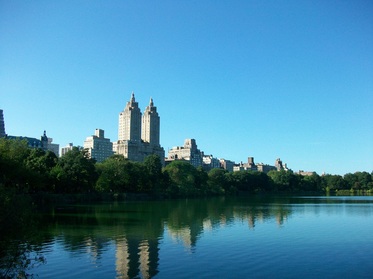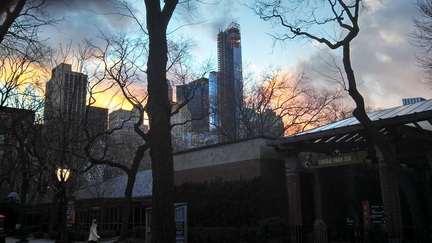Central Park - New York, NY
Central Park is the most celebrated urban parks in not only America, but possibly the world. It is the public centerpiece of the largest city in America, and is the most heavily used park in the country as well. It is a top attraction for tourists and residents alike, as they are both drawn to the undeniable qualities the park offers. Over 35 million annual visitors can attest to the park's charms as well as the important role it plays. Central Park is the classic definition of an urban park and the prototype on which countless other parks around the world have tried to emulate. It provides a free sanctuary from the chaotic and dense urban environment of New York City. It also acts as one of the most vital and effective economic development catalysts in not only the city, but perhaps the entire country.
The park began to be developed at a time of incredible growth in New York City's population. It also coincided with the rising belief in the positive benefits of adequate public space in crowded urban areas. The park began to be created in 1857 in an area of Manhattan that was largely different from its present-day development character. The northern part of the island had yet to be densely developed, but it was being rapidly encroached upon. The city decided it would be in the best interest of everyone to preserve a large tract of land for public space, which was a revolutionary tactic in a time where open space was often an afterthought. This was especially true in New York, where dense development dominated with little regard given to park or public space. Frederick Law Olmsted and Calvert Vaux won a design competition that was put forth by the city, and their job was to create large public centerpiece in the city. They accomplished that feat and so much more.
The park began to be developed at a time of incredible growth in New York City's population. It also coincided with the rising belief in the positive benefits of adequate public space in crowded urban areas. The park began to be created in 1857 in an area of Manhattan that was largely different from its present-day development character. The northern part of the island had yet to be densely developed, but it was being rapidly encroached upon. The city decided it would be in the best interest of everyone to preserve a large tract of land for public space, which was a revolutionary tactic in a time where open space was often an afterthought. This was especially true in New York, where dense development dominated with little regard given to park or public space. Frederick Law Olmsted and Calvert Vaux won a design competition that was put forth by the city, and their job was to create large public centerpiece in the city. They accomplished that feat and so much more.
|
Olmsted desired to bring the grand public parks in various cities across Europe, which he personally experienced, to America. The design and construction process was very comprehensive, as the park today is not a representation of the natural landscape. The terrain was altered throughout the park's territory and soil was transported from areas such as New Jersey because the original soil was not thought to be strong enough to support the amount of trees and other landscaping throughout the park. Numerous ponds and lakes were implemented as well ,and they quickly became favored spots in the park. Over time, the park became home to an impressive amount of sculptures, monuments, and other public art.
|
Not much else really needs to be stated about the park, as it has been re-hashed over and over again since its inception. However, the park has not been without its challenges, and its fortunes and history has largely coincided directly with New York City as a whole. The park was a grand success when it first opened as the city was growing and establishing itself as the economic and cultural capital of America. However, for much of the 20th century, the park fell into neglect and disrepair. Maintenance was often overlooked and the architecture of the park suffered. There was little effort to remove things such as dead trees and vandalism became prevalent throughout many areas. By the 1960s and 70s, the park became an area almost to avoid by average New Yorkers and tourists, especially at night. It was considered unsafe and became a haven for crime and antisocial behavior. The park's story was consistent with New York City as a whole, as the 1970s brought turmoil and population decline to the city. However, renewed investment in the park, under the operation of the Central Park Conservancy, has revitalized it and made it perhaps more impressive and welcoming than ever.
|
In the end, Central Park is the ultimate example of the positive effect a well-designed public space or park can have on its surrounding area. It is not a coincidence that Central Park borders perhaps the priciest and most desirable real estate in not only America, but the world. In New York City, having an address close to the park or even across from it is a highly sought-after status symbol. The park also contributes heavily to the quality of life for New Yorkers of all kinds. True to its name, it is centrally located in the city, allowing easy access for people from differing areas of the massive city. In a city largely without private green space or yards, especially in Manhattan, Central Park functions as a communal yard in which everyone takes pride. It is a valuable spot for events, gatherings, relaxation, and exercise. It is also one of the key components for positive economic development in its area. One cannot ask for much more from a park.
|




